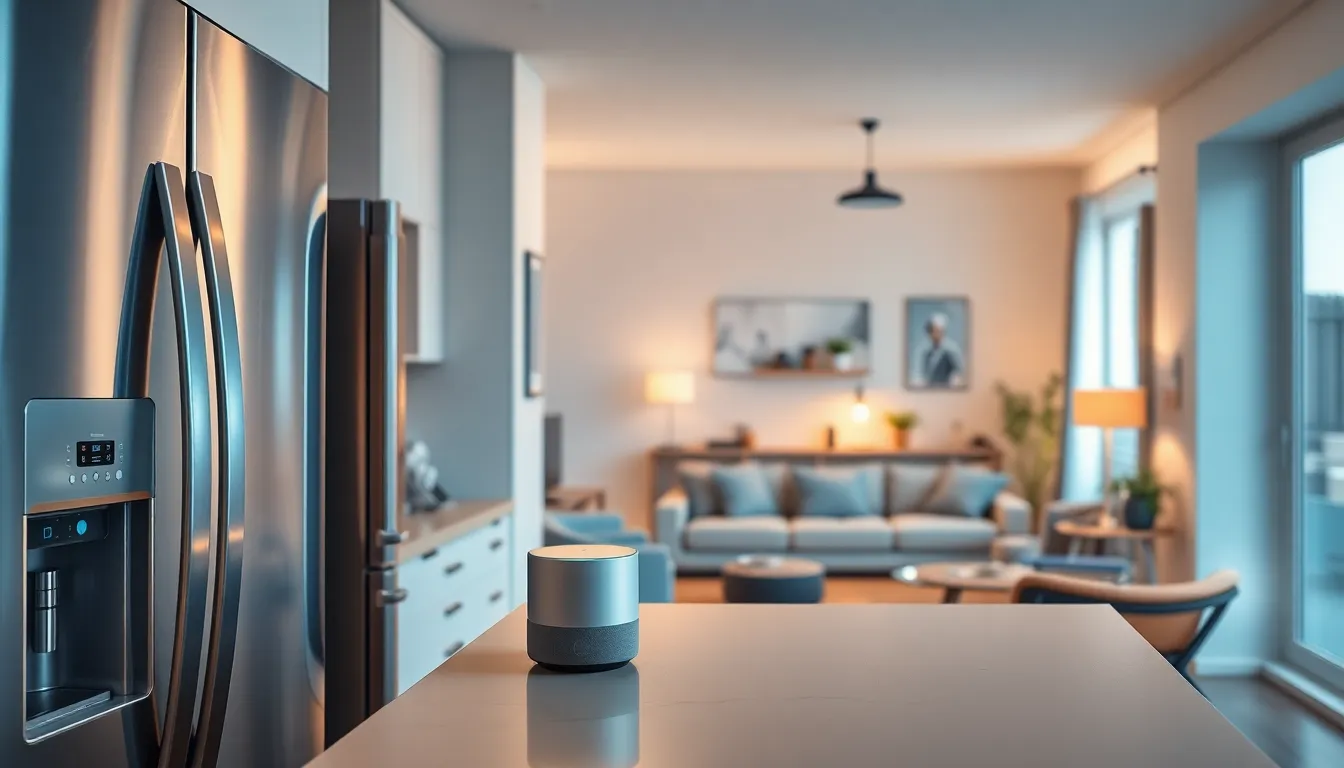Imagine a world where your toaster knows just how dark you like your bread, while your fridge reminds you to buy more milk before you run out. Welcome to the Internet of Things infrastructure, where everyday appliances become your personal assistants, making life easier and a little more entertaining.
This digital web connects devices, enabling them to communicate and share data like gossiping neighbors. With the right infrastructure in place, businesses and homes can harness the full potential of IoT, transforming mundane tasks into seamless experiences. So buckle up as we dive into the nuts and bolts of this fascinating ecosystem and discover how it’s revolutionizing the way we live and work.
Table of Contents
ToggleUnderstanding Internet of Things Infrastructure
Internet of Things (IoT) infrastructure encompasses the hardware and software that facilitates connectivity among devices. This environment allows appliances and systems to communicate efficiently, sharing crucial data across networks.
Definition and Components
IoT infrastructure includes several key components. Sensors collect data from the environment, enabling real-time monitoring. Connectivity options like Wi-Fi, Bluetooth, and cellular networks allow devices to transmit information. Cloud computing provides the necessary storage and processing power for vast amounts of data. Gateways process and manage data flow, ensuring secure communication. Integration platforms connect various devices and applications, streamlining user interactions.
Importance in Modern Technology
Modern technology relies heavily on IoT infrastructure for various reasons. Businesses utilize IoT to improve operational efficiency, reduce costs, and enhance decision-making processes. Homes benefit from increased automation and energy management. Healthcare systems leverage IoT for remote patient monitoring and chronic disease management. Smart cities utilize IoT for traffic management and resource optimization. Overall, the infrastructure supports innovations that drive productivity and enhance quality of life.
Key Technologies Behind IoT Infrastructure


Key technologies form the backbone of IoT infrastructure, enabling seamless connectivity and efficient data management. These technologies include cloud computing, edge computing, and numerous other systems that facilitate the communication and analysis of data from connected devices.
Cloud Computing
Cloud computing offers scalable resources for storing and processing data generated by IoT devices. It allows for centralized data management, enabling users to access information from anywhere with internet connectivity. Businesses benefit from cloud solutions through reduced infrastructure costs and enhanced data analytics capabilities. Services such as Amazon Web Services and Microsoft Azure provide the necessary support for applications and services, allowing organizations to deploy IoT solutions quickly. Additionally, cloud storage solutions streamline data retrieval, making real-time monitoring and immediate decision-making more achievable.
Edge Computing
Edge computing minimizes latency by processing data closer to where it’s generated. This technology reduces the need for sending vast amounts of data to centralized servers, which enhances response times for IoT applications. For critical operations, edge computing ensures that data management happens locally, improving efficiency and reliability. Industries like manufacturing and healthcare utilize edge computing to monitor equipment performance or patient vital signs in real-time. As a result, edge computing empowers organizations to respond quicker to events, optimize bandwidth usage, and strengthen security by limiting data transfer to central systems.
Challenges in Implementing IoT Infrastructure
Implementing IoT infrastructure faces multiple challenges that can hinder its effectiveness. Organizations must address these issues to ensure seamless operations and optimal user experiences.
Security Concerns
Security concerns pose significant risks to IoT infrastructure. Unauthorized access can lead to data breaches, compromising sensitive information collected from connected devices. Attackers exploit vulnerabilities in devices and networks, making it essential to implement robust security measures. Encryption techniques and regular software updates are crucial components for enhancing security. Additionally, establishing secure communication protocols helps safeguard data transmissions. Organizations should prioritize security by incorporating cybersecurity best practices, as the consequences of negligence can result in severe financial and reputational damage.
Interoperability Issues
Interoperability issues can complicate the integration of various IoT devices and platforms. Different manufacturers often create devices with proprietary communication protocols, leading to compatibility problems. These inconsistencies create barriers for seamless data exchange among devices. Developing universal standards is key to overcoming these challenges. Organizations benefit from adopting open-source frameworks that foster compatibility and collaboration. By ensuring that devices can communicate effectively, businesses improve operational efficiency and user satisfaction. Prioritizing interoperability streamlines the ecosystem and enhances the overall IoT experience.
Future Trends in IoT Infrastructure
Emerging trends in IoT infrastructure reveal significant advancements and evolving technologies poised to shape the future.
Advancements in Connectivity
5G technology enhances connectivity for IoT devices by providing faster data transmission and lower latency. This rapid connectivity supports real-time applications across diverse sectors like healthcare and smart cities. Wi-Fi 6 also contributes by improving network efficiency, enabling more devices to connect simultaneously without degrading performance. Bluetooth mesh networking allows devices to communicate across larger areas, expanding IoT applications in sectors such as industrial automation and home security. Emerging technologies like Li-Fi may further revolutionize connectivity by using light to transmit data at high speeds. Each innovation works to create a seamless network, vital for the proliferation of smart devices.
Role of Artificial Intelligence
Artificial intelligence (AI) transforms IoT infrastructure by enhancing data processing and decision-making capabilities. Smart algorithms analyze vast amounts of data generated by connected devices to derive actionable insights. Predictive analytics enables businesses to anticipate maintenance needs, reducing downtime and operational costs. AI-powered chatbots facilitate user interaction with IoT systems, improving customer service and user experience. Additionally, machine learning models enhance security measures by identifying anomalies in data flows that suggest potential threats. Integration of AI with IoT drives automation, streamlining processes and increasing efficiency across various industries.




